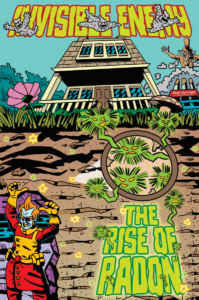Radon is a colorless and odorless radioactive gas that naturally forms in soil and bedrock and is highly present across southwest Kentucky. To raise awareness about the presence of radon, the University of Kentucky has partnered with state academic and community organizations to conduct the Radon on the RADAR (Residents Acting to Detect and Alleviate Radon) study.
Bob Smith with Hopkinsville Community College’s Professional and Technical Studies division appeared on WHOP to highlight the five-year study taking place in Christian, Logan, Pulaski and Rowan counties.
Smith says radon released into the open air is not a problem because it will be diluted, but the gas can be trapped in homes where it becomes more concentrated which could lead to occupants developing health issues.
According to the American Cancer Society, high exposure to radon can result in lung cancer. Those in the counties included in the study can borrow a radon detection kit from their local public library and test their homes which Smith says is the only way to detect radon levels.
For homes with high radon retention levels, Smith says mitigation methods are easy to implement and shared that he had to install a mitigation system in his own home. Smith says radon can be mitigated through a vacuum system that emits the gas above the roof.
Smith compared radon level testing to going to the doctor, saying without going to the doctor you live with the risk of being in poor health but not knowing it. Similarly, to radon levels, one’s home could have high levels of the toxic gas, but the only way they would know is if they test their home.
In Christian County, radon detection kits can be borrowed from the Hopkinsville-Christian County Public Library. More information about the Radon on the RADAR study can be found at breathe.uky.edu.
Comic book cover courtesy of the Radon on the RADAR study


